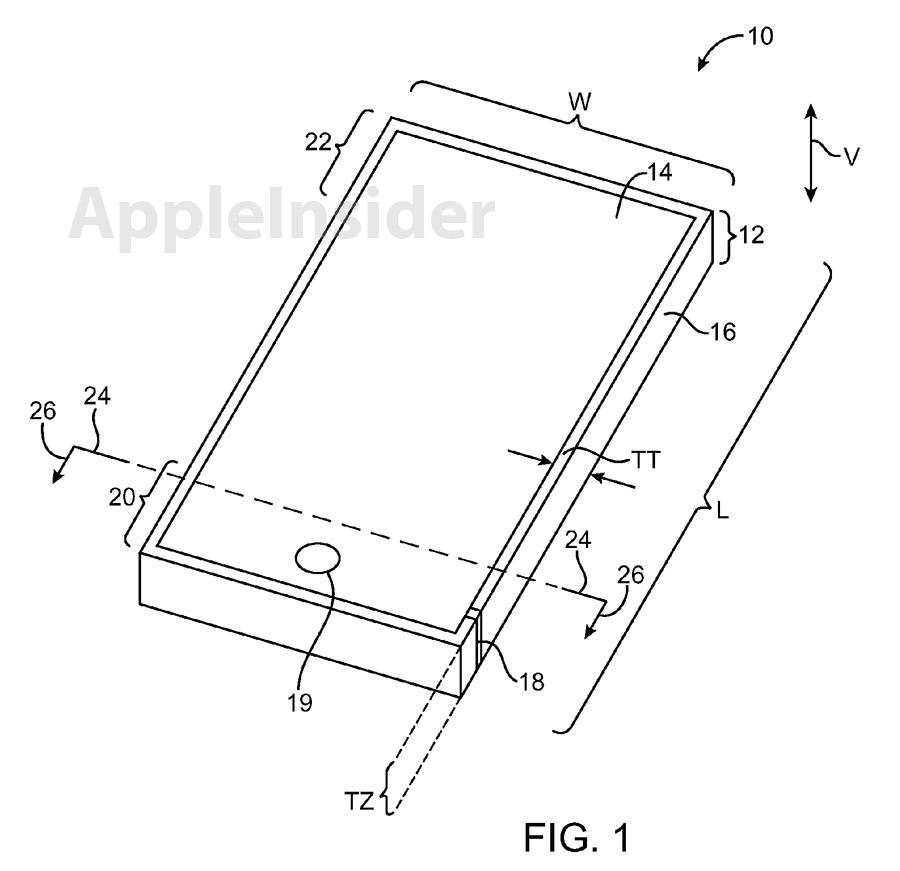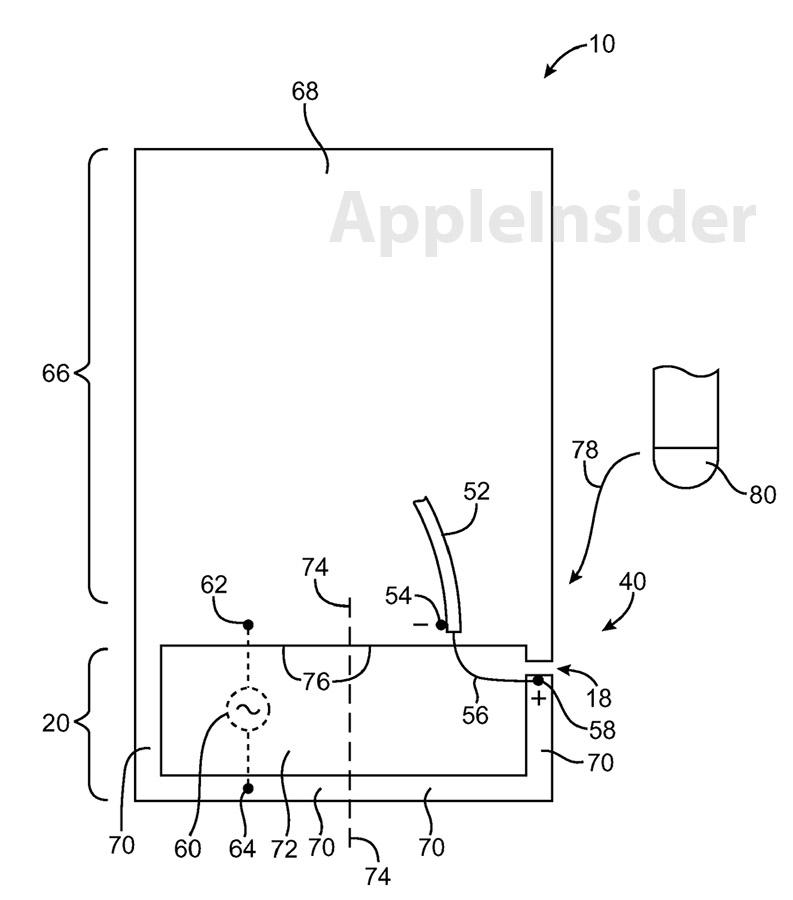The U.S. Patent and Trademark Office on Tuesday granted Apple a patent for a bezel gap antenna that appears to have been used in the iPhone 4, a design which ultimately sparked the notorious "antennagate" debacle in 2010.
Apple's U.S. Patent No. 8,270,914 for "Bezel gap antennas" describes antenna assemblies that can function as part of a wireless device's bezel to reduce the overall size of the product. The patent was first filed for in December, 2009, a little over six months prior to the unveiling of Apple's iPhone 4.
As seen in the invention's background, the "bezel gap" solution was an attempt to bring down device size while maintaining or improving on wireless operating performance:
To satisfy consumer demand for small form factor wireless devices, manufacturers are continually striving to implement wireless communications circuitry such as antenna components using compact structures. At the same time, it may be desirable to include conductive structures in an electronic device such as metal device housing components. Because conductive components can affect radio-frequency performance, care must be taken when incorporating antennas into an electronic device that includes conductive structures.
In order to make the iPhone 4 thin and light, Apple implemented a metal band around the device which was used for both structural rigidity as well as antennas for both Wi-Fi and cellular communication. The patent notes the conductive nature of such bezel elements can be detrimental to radio frequency performance and suggests the introduction of gaps between loop antennas.
From the patent's description:
These conductive structures tend to block radio-frequency signals. It may therefore be desirable to form some or all of the rear planar surface of device from a dielectric material such as plastic.
To be clear, the gap can be any dielectric material, including air, however Apple chose to use plastic to ensure the bezel was "aesthetically pleasing."
Going further, the antenna can be tuned to reduce the electric field concentration near the gap, thus avoiding unwanted attenuation from fingers or other body parts.
In one embodiment, the bezel gap structure can separate two loop antennas, one located at the top of a device to handle Wi-FI, GPS and Bluetooth, and another at the bottom for "voice and data communications in one or more cellular telephone bands." This is the exact configuration of the iPhone 4's antennas.
Shortly after the iPhone 4 launched in 2010, customers began to complain of cellular signal loss seemingly associated with how they held the device. The signal loss was later attributed to attenuation with users' hands, prompting Apple to offer free iPhone bumper cases to those affected.
In February, Apple issued a statement regarding the settlement of a class-action lawsuit over what is now known as the "antennagate" controversy, saying the company paid out $15 to a "small number" of people.
 Mikey Campbell
Mikey Campbell









-m.jpg)






 Charles Martin
Charles Martin
 Christine McKee
Christine McKee
 Wesley Hilliard
Wesley Hilliard
 Malcolm Owen
Malcolm Owen
 Andrew Orr
Andrew Orr
 William Gallagher
William Gallagher
 Sponsored Content
Sponsored Content








52 Comments
How NOT to design an antenna. My iP4 has the shittiest reception and most sensitive design of any phone. Touch it and it drops a call. Without a bumper, it's pretty bad.
[quote name="Eriamjh" url="/t/152690/apple-granted-patent-for-iphone-4-antennagate-antenna-design#post_2192036"]How NOT to design an antenna. My iP4 has the shittiest reception and most sensitive design of any phone. Touch it and it drops a call. Without a bumper, it's pretty bad.[/quote] I've never had any issues with my 4S.
LOL!
Just don't copy it that way, okay?
Finally, it's a patent worthy of carrying Apple's name on it.
[quote name="Eriamjh" url="/t/152690/apple-granted-patent-for-iphone-4-antennagate-antenna-design#post_2192036"]How NOT to design an antenna. My iP4 has the shittiest reception and most sensitive design of any phone. Touch it and it drops a call. Without a bumper, it's pretty bad.[/quote] Yes, that's what all the whiners and media whores say. Independent tests found otherwise.